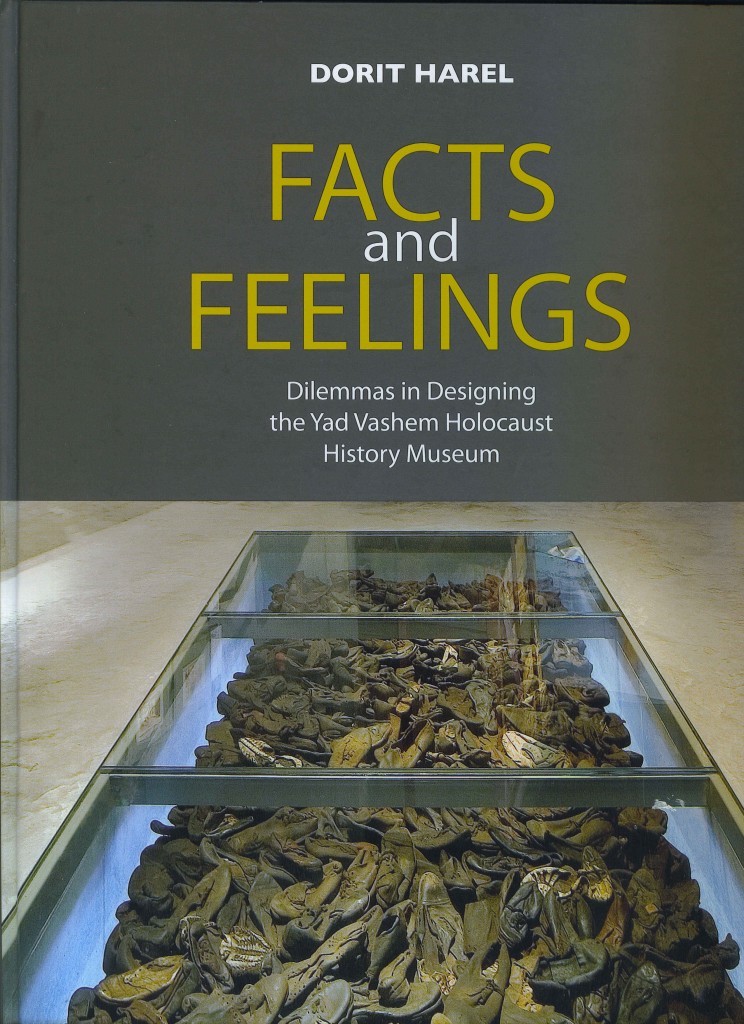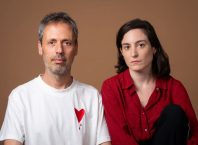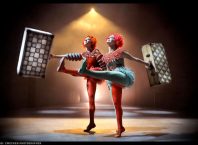The new Yad Vashem Holocaust History Museum was inaugurated on March 15, 2005, but that event was preceded by many years of thought, research, planning and discussions. The album Facts and Feelings is a visual and narrative tour of the process and the museum through the eyes of Dorit Harel, the museum’s designer.
Memory, documentation and commemoration are at the heart of this album. The museum’s design takes place in an era when the Holocaust is no longer a personal memory for most people. Museums and other sources, such as books, films and plays, have the power to shape the perception, knowledge and emotional experience of these events and the implications of decision making are profound.
Documenting the process of creating the new museum, it is also a memoriam for the author, designer Dorit Harel, who died in 2007. Harel’s extensive experience in archaeological and historical design projects gave her a unique perspective on the challenges presented by the Yad Vashem Museum. Her previous projects include: the Skirball Museum of Archaelogy at the Hebrew Union College, Jerusalem, the Anna Ticho House in Jerusalem, the Davidson Visitor Center in the archaeological garden in Jerusalem’s Old City, the Visitor Center at the Tzippori Citadel and the Jewish Museum in Cape Town, South Africa.
The hardcover album is richly illustrated with large, full color photographs of the museum and its exhibits, accompanied by black and white sketches of design proposals for the exhibits. Creating a museum requires the teamwork of several sets of experts in different fields, and several narratives comprise the text of the album. An essay by Avner Shalev, Chief Curator and Chairman of Yad Vashem, opens the volume. Shalev describes the vision for the new museum and the process of realizing this vision through the joint efforts of curators, historians, architects, and the designer. Professor Hanna Yablonka, a member of the faculty of Ben Gurion University of the Negev and the historian of the Ghetto Fighter’s House, closes the album with an essay describing her experience of the museum, situating in the context of the relationship of the Israeli people to the Holocaust.
Yet it is Harel’s narrative, and her voice that forms the main part of the text. In a tone that is clear and conversational, informal yet precise, Harel invites the reader to consider issues of color, placement, time and navigation as creators of an experience and the means of preserving history. Particular attention is given to those moments where dilemmas arose, and points of conflict between the curatorial and design perspective.
Although the guiding principles for the design were clear – to give voice to the victims and bring their narrative to life, creating an emotional as well as intellectual experience for the museum visitor, the interpretation of those guidelines may well vary. A recurring theme in the conflicts that arose in the designer-curator dialogue was between the desire to display the many artifacts in the Yad Vashem collection, as opposed to Harel’s desire to create “breathing room” in the museum so that visitor’s will not be overwhelmed by too much information.
Some dilemmas originate in the new technologies available: should the exhibits rely on artifacts or audio-visual displays? Often the different elements support and enhance one another. For example, Harel explains that 15” LCD screens are used in one exhibit to display an album that visitors can browse, ‘turning’ the virtual pages, while the original album is adjacent –intact and protected. The presence of the original album expresses an eloquent testimony, but the computer technology allows the visitor to explore the album and create a more personal connection to the story.
Harel’s narrative illuminates the visual influences on memory and makes one consider the way we remember and think of the Holocaust, and some of the perhaps subconscious reasons underlying our perceptions. It is interesting to see the sketches of “unused options” alongside the photographs of the actual exhibits, enabling the reader to see the implications of choices made. For example – Harel notes that most photographs taken in the 1940s were black and white. In thinking about the Holocaust, many people unconsciously ‘see’ the people and events in black and white, a visual effect that has an accompanying emotional impact of distance. One of the choices made in the museum was to include contemporary color photographs of places such as the entrance to the Birkenau Concentration Camp, alongside the original black and white photograph, situating the narrative of the Holocaust as part of our contemporary reality.
Facts and Feelings: Dilemmas in Designing the Yad Vashem Holocaust History Museum
Dorit Harel, Chief Editor: Dr. Zeev Drori, Editors: Doron Gumpert, Dahlia Falk Zaguri, Yaffa Shimrony. Hard cover, 120 pages.
Published by Dorit Harel Designers 2010 with the support of Yad Vashem







Comments are closed.